When Superpowers Meet Horror: An Unexpected Blend
The superhero universe is usually associated with epic battles against megalomaniacal villains, inspiring heroic acts, and protecting the world from cosmic threats. But lurking in the shadows of these tales of capes and tights is a more sinister and disturbing side. Yes, nerds, prepare to have your concepts of heroism shaken, as we delve into the depths of superhero comic book stories that truly embrace the horror genre. Forget the cartoonish villains for a moment and brace yourselves for grotesque monsters, suffocating psychological suspense, and supernatural threats that would make even Batman shudder in his boots! The superhero universe can also be incredibly… terrifying.
Our Top 10 Frightening Superhero Horror Comic Stories
#1 – “The Demon Bear Saga” (New Mutants #18-20, Marvel, Chris Claremont & Bill Sienkiewicz, 1984)
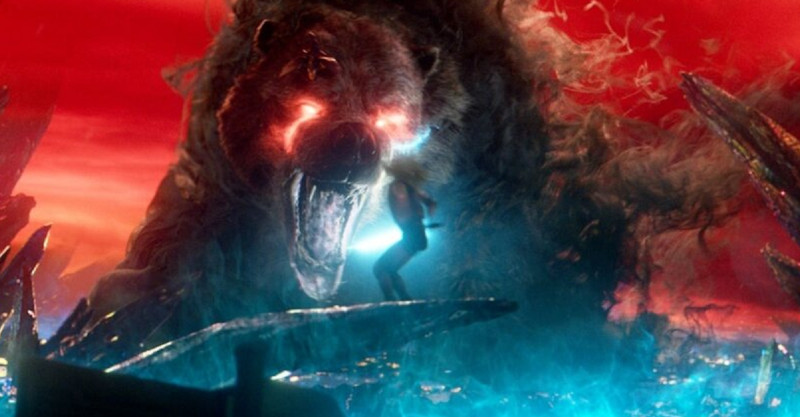
Synopsis: Danielle Moonstar, Mirage, is tormented by nightmares of a demonic bear linked to her parents’ deaths. When the bear manifests in reality, the New Mutants must face an implacable supernatural force that feeds on fear and pain.
What Makes It Scary: The dreamlike and disturbing atmosphere created by Sienkiewicz’s expressionistic art, the relentless and almost invincible nature of the Demon Bear, and the exploration of trauma and fear as tangible forces.
Why Horror and Superhero Fans Will Like It: Blends the team dynamics of the New Mutants with genuine elements of psychological horror and supernatural threat.
Where to Find It: Found in the original New Mutants #18-20 issues and in trade paperbacks of the saga.
#2 – “Batman: Arkham Asylum” (Batman: Arkham Asylum – A Serious House on Serious Earth, DC, Grant Morrison & Dave McKean, 1989)
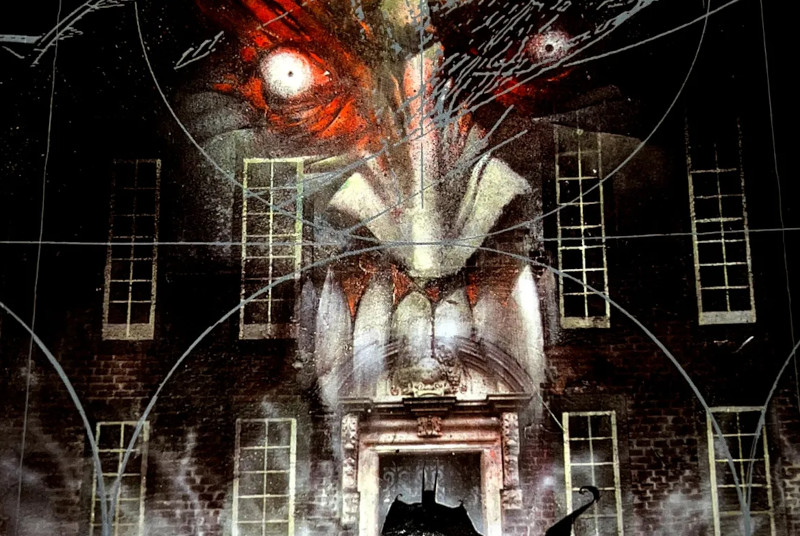
Synopsis: When the inmates of Arkham Asylum take control and demand Batman’s presence, the Dark Knight ventures into the depths of Gotham’s darkest madhouse, confronting his fears and the madness that imprisons his greatest enemies.
What Makes It Scary: The claustrophobic and oppressive atmosphere of Arkham Asylum, the distorted and grotesque portrayal of the villains, and the exploration of Batman’s sanity as he delves into the madness. McKean’s art intensifies the psychological horror.
Why Horror and Superhero Fans Will Like It: A dark and adult take on the Batman universe, with elements of psychological horror and a narrative that questions the line between hero and villain.
Where to Find It: Published as a standalone graphic novel, widely available in bookstores and digital platforms.
#3 – “Venom: The Hunger” (Amazing Spider-Man Super Special #1, Marvel, Tom DeFalco & Mark Bagley, 1995)
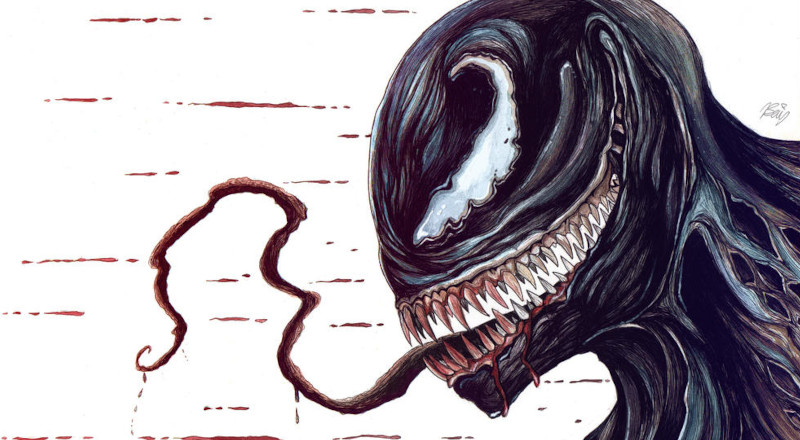
Synopsis: Eddie Brock and the Venom symbiote face an even more sinister and ravenous alien creature that feeds on other symbiotes and poses an existential threat to Venom.
What Makes It Scary: The introduction of an even more powerful and monstrous predator into Venom’s universe, the feeling of vulnerability of a character usually seen as threatening, and the elements of cosmic horror and survival.
Why Horror and Superhero Fans Will Like It: Expands Venom’s mythology with a genuinely terrifying threat and raises the stakes for the symbiote.
Where to Find It: Found in the Amazing Spider-Man Super Special #1 issue and in trade paperbacks of Venom stories.
#4 – “Swamp Thing: The Anatomy Lesson” (Swamp Thing #21, DC/Vertigo, Alan Moore & Stephen Bissette, 1984)
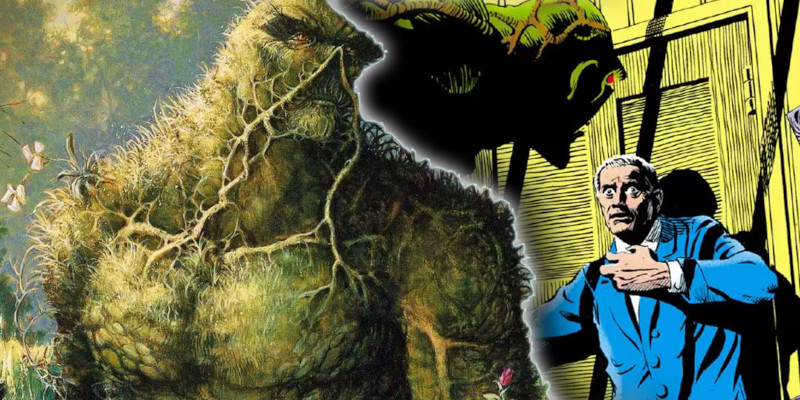
Synopsis: Alec Holland, the Swamp Thing, discovers the shocking truth about his origin: he was never truly a man transformed into a monster, but rather a sentient plant that absorbed Holland’s consciousness. This revelation shatters his identity and plunges him into an existential crisis with cosmic horror undertones.
What Makes It Scary: The subversion of Swamp Thing’s classic origin, the implication that his entire life was an illusion, and the feeling of displacement and loss of identity that borders on existential horror.
Why Horror and Superhero Fans Will Like It: A fundamental story that redefined the character and introduced elements of cosmic horror and dark philosophy into the DC Universe.
Where to Find It: Found in Swamp Thing #21 and in trade paperbacks of Alan Moore’s run.
#5 – “Marvel Zombies” (Marvel Zombies #1-5, Marvel, Robert Kirkman & Sean Phillips, 2005-2006)
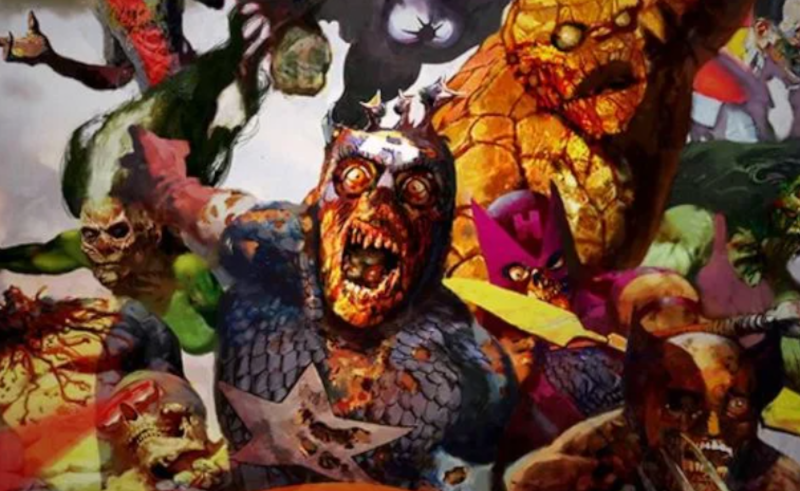
Synopsis: An alternate reality where Marvel superheroes are infected by a zombie virus and become cannibalistic creatures hungry for flesh. The story follows their search for new victims and the inevitable destruction of their world.
What Makes It Scary: The shocking premise of iconic heroes transformed into grotesque monsters, the graphic violence, and the horror of seeing beloved characters in such a macabre context.
Why Horror and Superhero Fans Will Like It: An ultra-violent and fun (in a dark way) take on the Marvel Universe, featuring zombified versions of classic heroes.
Where to Find It: Published as a five-issue miniseries and in various trade paperbacks.
#6 – “The Brood Saga” (Uncanny X-Men #155-158, 162-167, Marvel, Chris Claremont & Dave Cockrum/Paul Smith, 1982-1983)
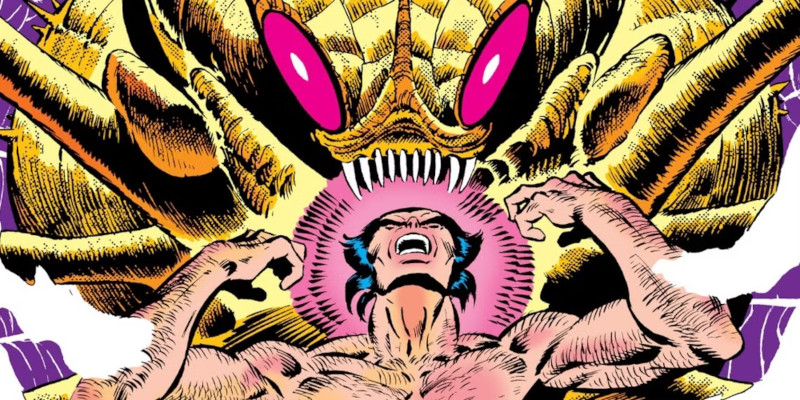
Synopsis: The X-Men face the Brood, a parasitic alien race that implants its eggs in living hosts, transforming them into members of their hive mind. The saga involves body possession, biological horror, and the threat of assimilation.
What Makes It Scary: The invasive and repulsive nature of the Brood, the horror of bodily transformation and loss of identity, and the feeling that any of the X-Men could be the next host.
Why Horror and Superhero Fans Will Like It: A classic X-Men saga that blends superhero action with elements of body horror and alien invasion.
Where to Find It: Found in the original Uncanny X-Men issues and in trade paperbacks of the Brood Saga.
#7 – “Crossed: Wish You Were Here” (Avatar Press, Simon Spurrier & Javier Barreno, 2012-2013)

Synopsis: While “Crossed” is its own universe, its premise of a pandemic that turns people into disfigured, murderous maniacs with a “cross” on their faces shares elements with superhero horror in a brutal and unforgiving post-apocalyptic setting.
What Makes It Scary: The sadistic and irrational nature of the infected (“Crossed”), the extreme violence, and the depiction of a total collapse of civilization where hope is almost nonexistent.
Why Horror and Superhero Fans Will Like It: An extreme and unfiltered look at a world plunged into horror, with characters fighting to survive in unimaginable circumstances.
Where to Find It: Published as a webcomic and later in print issues and trade paperbacks by Avatar Press.
#8 – “Hellblazer” (DC/Vertigo, Various Authors)
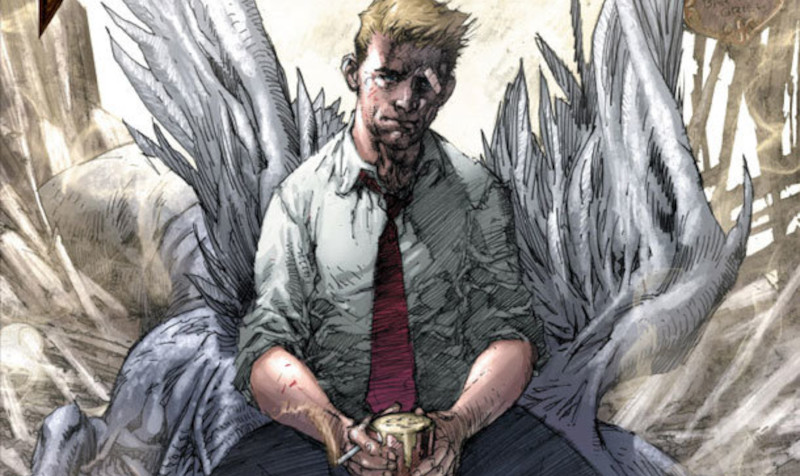
Synopsis: The stories of John Constantine, a sarcastic and tormented occult detective and mage, often delve into themes of supernatural horror, demonic possession, black magic, and the darkest corners of the human soul. While Constantine operates on the fringes of the traditional superhero universe, his stories touch on threats that could easily cross that line.
What Makes It Scary: The dark and realistic atmosphere of the occult, Constantine’s morally ambiguous nature, and the psychological and supernatural horrors he faces.
Why Horror and Superhero Fans Will Like It: A more adult and darker perspective on the supernatural within the DC Universe, with a charismatic protagonist and genuinely frightening stories.
Where to Find It: Published in various series and graphic novels over the years.
#9 – “Batman: The Cult” (Batman: The Cult #1-4, DC, Jim Starlin & Bernie Wrightson, 1988)
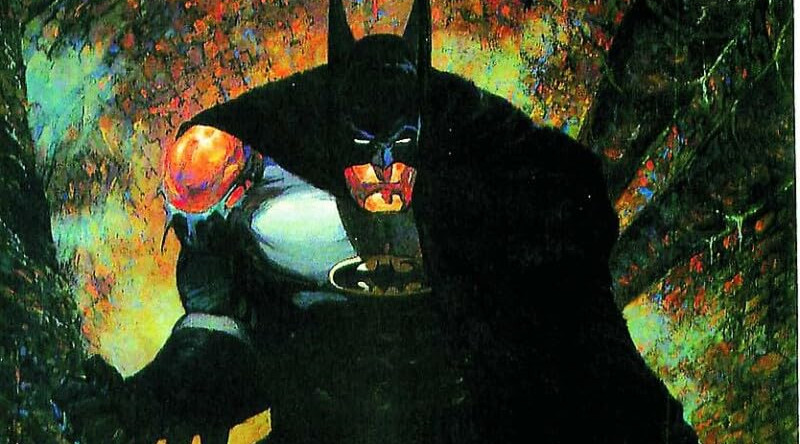
Synopsis: Batman is captured and brainwashed by a fanatical religious cult led by the charismatic Deacon Blackfire. The story explores the psychological horror of mind manipulation and Batman’s struggle to reclaim his identity.
What Makes It Scary: Batman’s vulnerability to brainwashing, the oppressive atmosphere of the cult, and the depiction of religious fanaticism bordering on terror. Wrightson’s dark art intensifies the sense of danger and despair.
Why Horror and Superhero Fans Will Like It: A story that challenges Batman’s invincible image and places him in a situation of intense psychological horror.
Where to Find It: Published as a four-issue miniseries and in trade paperbacks.
#10 – “Animal Man: The Red Plague” (Animal Man #1-4, DC/Vertigo, Grant Morrison & Chaz Truog, 1988)
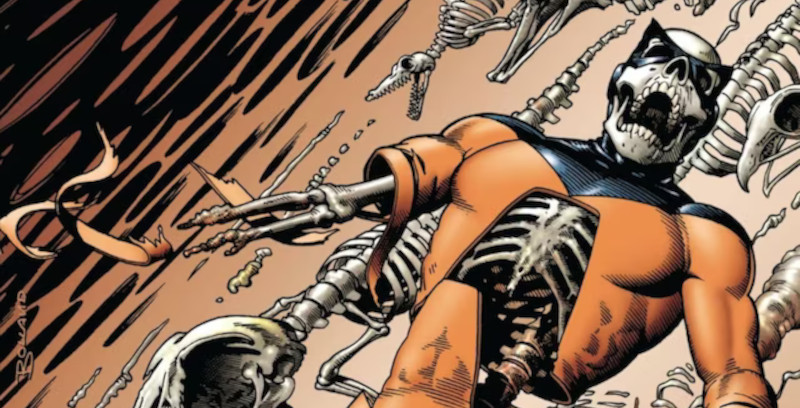
Synopsis: Buddy Baker, Animal Man, faces a mysterious red plague that causes grotesque mutations in animals and threatens to spread to humans. The story blends biological horror with the exploration of Buddy’s connection to the animal kingdom.
What Makes It Scary: The grotesque and disturbing transformations of the infected animals, the feeling of an uncontrollable biological threat, and Buddy’s anguish at seeing the natural world being corrupted.
Why Horror and Superhero Fans Will Like It: A unique take on biological horror within the superhero universe, with the sensitivity and intelligence of Grant Morrison’s writing.
Where to Find It: Published as a four-issue miniseries and in trade paperbacks of Grant Morrison’s Animal Man run.
Beyond Superpowers: The Art of Creating Horror in Superhero Comics
Horror in superhero comics often manifests through impactful visual elements, such as grotesque monsters and visceral violence, but also through the exploration of primal fears, such as the loss of identity, bodily invasion, the threat of the unknown, and the fragility of sanity. Talented writers and artists manage to weave these horrifying tales within the familiar framework of superhero universes, offering a unique and disturbing experience.
Conclusion: Prepare to See Your Heroes in a New (Darker) Light!
If you thought the world of superheroes was all about colorful action and adventure, we hope this list has opened your eyes (and perhaps made you a little apprehensive). These stories prove that horror can find a surprising home even among the caped crusaders. So, turn off the lights, grab your darkest trade paperback, and prepare to face the nightmares that lurk in the shadows of the superhero universe!
Which of these stories made you the most curious? Do you know any other superhero horror stories that gave you chills? Share your recommendations in the comments below!
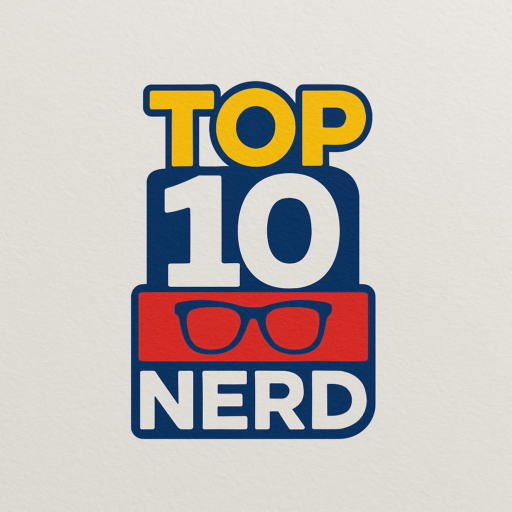

Leave a Reply